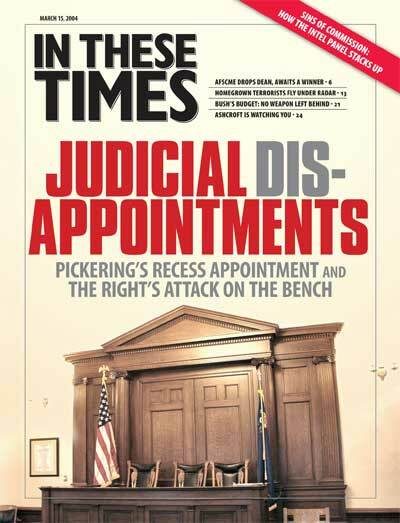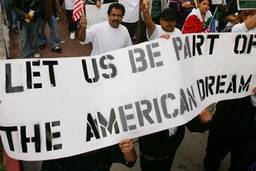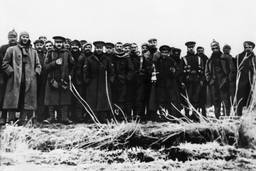The way The World Social Forum is described in its literature sounds great: “an open meeting place for reflective thinking, democratic debate of ideas, formulation of proposals, free exchange of experiences and interlinking for effective action.”
No wonder U.S. activists have picked up on this three-year-old international phenomenon, created to combat the World Economic Forum and now a counter-forum so popular it spawned a counter-counter-forum and a Tolstoy-length program. But where are U.S. social forums carrying the idea? Catching up to cities like Pittsburgh and Ithaca, Chicago got its first taste of praxis-building January 31 in what is supposed to be the future of social forums, de-emphasizing the massive world gathering for internationally linked local and regional meetings. Turnout was triple what organizers expected — upward of 500 by day’s end.
But like its international counterpart, Chicago’s forum was essentially a talking shop, where so many topics were presented it was impossible to attend more than a fraction of them or to find out what happened. Teaching people to work together and share strategies is great — the mohawked anarchokid spotted talking with the elderly nun was just one example — but are the new people who come to these events leaving committed to action and connected to new groups, or do they just leave?
For an event designed to inspire the grassroots, the gaze was cast rather distant. Workshops about national or global issues beat local and state ones by almost a 4-to-1 margin. The inevitable droning-panelist syndrome choked off debate and even dialogue at some points, and white guys seemed to be out front an awful lot (case in point: speakers at the gentrification seminar included zero women and one Latino, who got shut up halfway through his introduction). Social forums promote a “permanent process” of building alternatives to corporate models, but on the ground it looked more like a choir enjoying itself as one preacher after another stood up to deliver his sermon.
Unsurprisingly, the hard left seems to like this kind of event almost as much as their scarf-like Palestinian kaffiyehs, as much a standard-issue item for them as a steaming Starbucks cup is for the yuppie.
A professor stood up in the morning plenary to ask a decent question, about the missed opportunity to organize the thousands of people awakened to activism during the lead-up to the Iraq war. His mistake was to suggest it may well have been the domineering presence of ossified ideologists that turned people off. After the snorting died down, several of the next speakers denounced him. Coulda been a Comintern meeting. The forum’s democratic structure can be its downfall, like so many activist projects before it, unless non-demagogic groups swallow the demagogues with their numbers.
Chicago activism seemed a small world by day’s end. Ghosts from campaigns past drifted through the hallways and staircases of Jones Prep High School, a curious choice itself. Perched on State Street at Harrison next to the giant Pacific Garden Mission, the location served up a little slice of reality — walking out of a room of do-gooders into bunches of homeless men has a way of adding some urgency to the discussion.
I don’t want to tear down the very concept of forums, which if done well are templates for the councils and assemblies at the core of a democratic, participatory society. Organizers want the forum to be an annual event, so in the interest of being constructive, here are some suggestions, compiled from people smarter than me who attended:
- Focus on the local. Prioritize local issues and invite more community organizers and progressive neighborhood groups. If we are to shape policy, the best chance we have is here at home, and these are the people to know.
- Get some action. An integral part of most similar daylong events includes pausing the chatter to hit a picket line, leaflet and generally stop traffic. With such a massive crowd, heads turn and a local fight gets some oxygen.
- Create a central space to share. With so many people and topics, a lot gets lost, and grasping the entirety of what is out there becomes impossible. Chicago is already a massive, difficult place to understand, but a freewheeling job-fair-like room displaying the gamut of local grassroots action would help.
I was still in cartoons-and-naptime land during Harold Washington’s tenure as Chicago mayor, but as I understand it, his administration succeeded because it bridged the divide separating communities of color and progressive whites. There is no doubt we need a new, true international, but not at the expense of home.

I hope you found this article important. Before you leave, I want to ask you to consider supporting our work with a donation. In These Times needs readers like you to help sustain our mission. We don’t depend on—or want—corporate advertising or deep-pocketed billionaires to fund our journalism. We’re supported by you, the reader, so we can focus on covering the issues that matter most to the progressive movement without fear or compromise.
Our work isn’t hidden behind a paywall because of people like you who support our journalism. We want to keep it that way. If you value the work we do and the movements we cover, please consider donating to In These Times.







